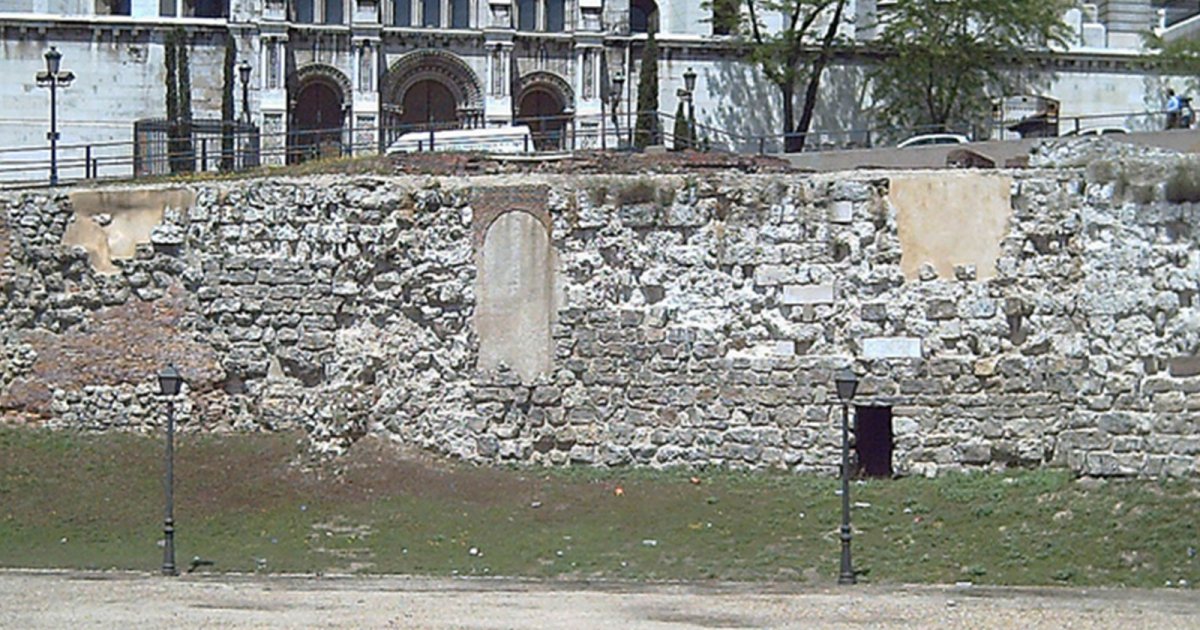SAN MIGUEL MARKET AND SURROUNDINGS, Arab Wall
 Language: English / USA
Language: English / USA
The history of the Arab Wall in Madrid starts here, at the end of Calle Mayor next to the flaming home of the Museo de Colleciones Reales where the statue of the Blessed María de la Almudena stands tall. According to legend, this holy image was hidden right here back in the year 712 for fear that it would be desecrated by the Muslims who were invading the Iberian peninsula. In fact just a few decades later, Emir Muhammad I conquered what was then a simple village and built a first "Alcazar", or a fortress exactly where the Royal Palace now stands, in addition to a defensive wall about two kilometers long.
Three centuries later when King Alfonso VI retook Madrid, it was at this exact spot where, thanks to the "miraculous" falling of some of the wall's stones in his path, the king found the Madonna with the candles still burning, as per the legend. From that moment on the holy image was venerated as the patron saint of Madrid and called the Virgen de la Almudena because it had been discovered where the "al-mudayna" stood, or the Arab citadel.
Now pause the audio and continue along the steep Cuesta de la Vega up to the small Parque Emir Mohamed I.
Ahead of you a long piece of wall extends that was rediscovered in the early 1950s and dates back almost a thousand years: it is a stretch of the bastions about 120 meters long, with a maximum height of nearly 12 meters and a thickness of 2.6 meters. The right side of the Arab Wall is no longer visible because it was used as the foundation of much more recent buildings.
FUN FACT: many homes were built against the Wall in the era of Arab rule, because there was plenty of water in that time. This is why the Arabs called the city "Mayrit", meaning Mother of Water. From this "Mayrit", as you have probably already guessed, comes the name Madrid.
And with this we have finished our tour of the surroundings of the Basilica of San Miguel in Madrid: MyWoWo thanks you for staying with us, and will see you at the next Wonder of the World!



